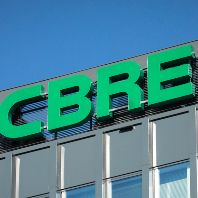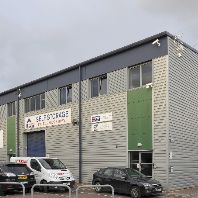There has been a marked improvement in the European property investment landscape with growing signs of recovery apparent even in ‘crisis’ hit countries, according to research published today by global property consultant Cushman & Wakefield.
A change in sentiment among consumers, businesses and financial markets is paving the way for a return of stronger activity. Prices in the best areas are already responding, with core yields down over the summer, and this is both reinforcing the market’s positive mood and encouraging new buyers and sellers to emerge.
Whilst the core favorites are still in high demand, prime supply is typically limited, forcing investors to consider alternative strategies to find stock. Some are chasing diversification to enhance portfolio returns while others are ready to take on risk as they seek out higher incomes or enhanced performance. Many however are opting to target new markets – resulting in a notable upturn in the selection of non-core locations.
While overall volumes in Europe fell 1.7% between the first and second quarters, Southern Europe rose 94% and Benelux 61%. In the previous quarter meanwhile Central Europe posted the biggest gains and saw the fastest growth overall in H1.
According to Jan Willem Bastijn, Head of Capital Markets at Cushman & Wakefield, EMEA: “The market bounce has begun and we are starting to see the rediscovery of a whole range of markets which had been overlooked for some time. What’s more with sentiment firmer in most areas, debt and equity increasingly available and buyers getting comfortable with more risk, the outlook is for a stronger rise in demand and activity in 2014.”
Property market trends are following on where other investment markets have led, according to David Hutchings, head of European research at Cushman & Wakefield. He said: “With measures of macro risk stabilizing or declining, the door has opened for investors to look more broadly around Europe, albeit still in a measured way, to reflect where they see value.“
The premium in 10-year bond yields between the core and non-core has come down markedly in the past year due both to an increase in core market bond yields and a relative fall in non-core areas.
The risk premium has more than halved to less than 400bp across the ‘crisis’ countries of Greece, Ireland, Italy, Portugal and Spain (GIIPS) to its lowest level for three years.
“Some of the changes we are seeing in risk premiums are justified in light of a truer reflection of macro risk and the fact that past averages reflected an overtly tolerant attitude to risk,” commented Hutchings. He added: “However, it is hard to deny that the real estate market is now sailing through calmer waters than for some years and the increased interest we are seeing is still more a vote of confidence in the property market generally rather than in non-core countries specifically. Investors in fact are looking at big cities and quality real estate in general, with first tier cities like Milan or Madrid winning out over smaller cities even in core markets.”
Markets of growing interest
“Interest is growing across Europe where the price is right but among what were less favored markets not long ago I see Italy leading at the moment with the Netherlands now not far behind. We’re not there yet in Spain or Portugal thanks to the slower recovery in lending in particular, but interest is definitely up and alongside Poland. I also see Spain as a key market for activity in 2014,” added Bastijn.
Italy saw a 54% increase in activity in the first half of the year and recent major deals such as AIG/Lincoln’s sale of the Da Vinci Center mark the beginning of a real improvement in activity.
According to Stephen Screene, Head of Capital Markets for Italy at Cushman & Wakefield: “The bounce in Italy is happening a lot quicker than many expected as investors have been drawn in by the yields on offer and the quality of assets available. In fact where the price and quality is right, there has been a doubling in the number of bidders for each asset or portfolio.”
In the Netherlands, activity was up 25% in the second quarter amid clear signs that investors are ready to look past current weaknesses to focus on the market’s long-term value and liquidity as a regular top five market in Europe by volumes – with particular focus on Amsterdam.
According to Jan Willem Bastijn: “The Netherlands will be a key market for activity next year and has already changed very quickly with assets that wouldn’t trade six months ago now subject to competitive bidding and yields for the best space starting to come under pressure.”
Value-add investors are dominating in core markets while opportunistic players are focusing more broadly across distressed assets and portfolios now coming to the market with private equity funds chasing product such as Atrium in Amsterdam and the Eva and Seven portfolios.
Among eastern markets vying for investment, Poland still stands out both due to its relative scale and its resilient recent performance. Activity has risen just moderately of late– with volumes up 16% in the first half of the year compared to 2012 – but the market is now established as a top 10 destination for capital in Europe and a growing target for cross border players.
According to Charles Taylor, Head of Cushman & Wakefield’s Polish office: “Yields of over 6% in Warsaw are looking increasingly attractive compared to sub-5% yields in many core European cities and with more investors seeking out higher incomes and ready to take on board a measured amount of risk to achieve that, liquid and growing markets like Warsaw are coming back into focus.”
In Spain, banking sales, restructuring and the first signs that the recession is bottoming out have helped to lift the market, with volumes rising 24% on the first half of last year and major deals set to boost that significantly over the next one-two years. Risk levels are still high but with Spanish bond yields falling back below Italian rates for the first time since Q1 2012, there are clear signs that investor sentiment towards Spain is recovering.
However, according to Rupert Lea, partner in Cushman & Wakefield’s Capital Markets team in Spain: “Attitudes towards the Spanish market are changing quickly but activity is not yet keeping pace. Those investors who researched the market last year, have turned up ready to buy but their enthusiasm is not matched by the supply of quality stock or sufficient vendors and banks who accept the reality of today’s pricing. It’s only when we see more motivated sellers and a return of sensibly priced finance that the market bounce will really be confirmed. Until then a steady increase is more likely.”
Source: Cushman & Wakefield














